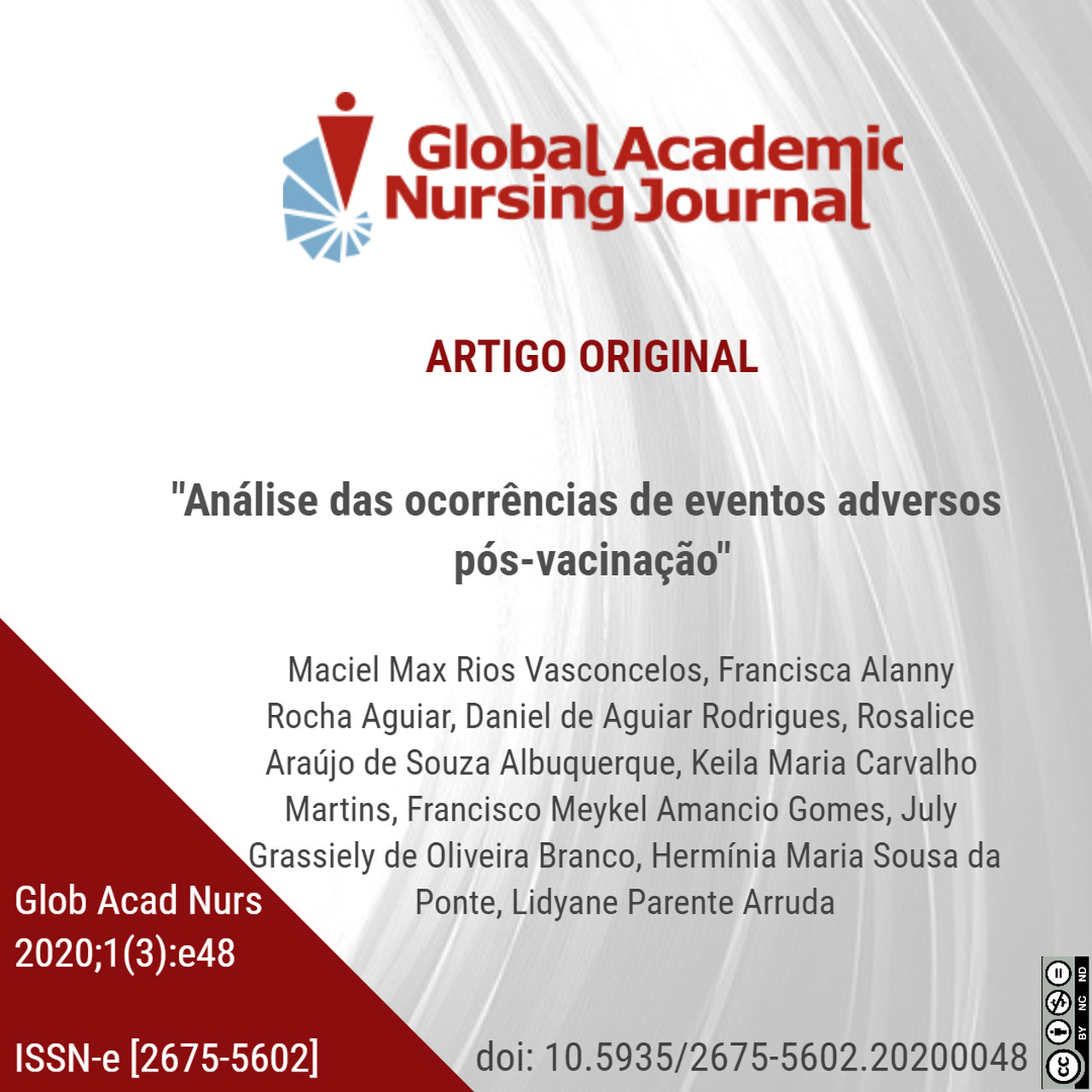Abstract
The aim was to analyze the notifications of adverse events after vaccination of the last five years in a city in the interior of Ceará, characterizing the occurrences of adverse events post-vaccine notified, as well as the identification and classification of cases. Retrospective documentary study with a quantitative approach, carried out between January and December 2018. 41 notification forms of adverse events after vaccination (AEFI) from January 2014 to June 2018 were used, provided by the municipality's epidemiological surveillance. The data were analyzed using simple descriptive analysis. The findings show that the age group most affected by PVAE were children aged 0 to 6 months and 29 days, female, mixed race and in routine vaccination. The pentavalent vaccine was the immunobiological one with the highest notification in cases of AEFI. Non-serious and local reactions were the most described manifestations. It was also observed non-conformities in filling out the notification forms, showing incomplete information and errors in filling in the fields, which can cause compromise of the real situation of adverse events after vaccination, in addition to difficulty in distinguishing which events are not associated with vaccines. It is necessary to constantly train health professionals on EAVP notification and its importance, to reduce errors and underreporting.

